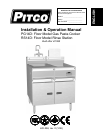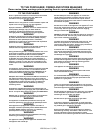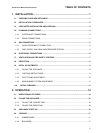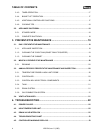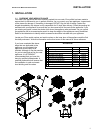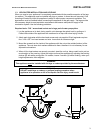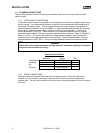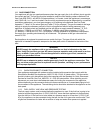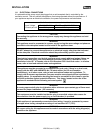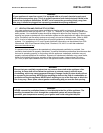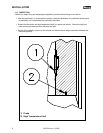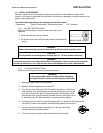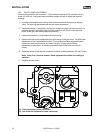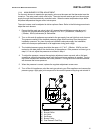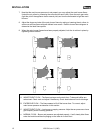
PG14D: Floor Model Gas Pasta Cooker INSTALLATION
5
1.5. GAS CONNECTION
Your appliance will give you peak performance when the gas supply line is of sufficient size to provide
the correct gas flow. The gas line must be installed to meet the local building codes or National Fuel
Gas Code ANS Z223.1 and NFPA 54 (latest editions). In Canada, install the appliance in accordance
with CSA B149.1 or .2 and local codes. Gas line sizing requirements can be determined by a qualified
installation professional, your local gas company or by referring to the National Gas Fuel Code,
Appendix C, Table C-4 (for natural gas) and Table C-16 (for propane). The gas line needs to be large
enough to supply the necessary amount of fuel to all appliances without losing pressure to any
appliance. A properly sized and installed gas line will deliver a supply pressure between 7.0” W.C.
(17.4mbars, 1.74kPa) and 10.0”W.C. (24.9mbars, 2.49kPa) natural gas or between 11.0”W.C.
(27.4mbars, 2.74kPa) and 13.0” W.C. (32.4mbars, 3.25kPa) propane to all appliances connected to
the supply line, operating simultaneously at full demand. The pressure at the gas valve shall not
exceed ½ PSI.
Each appliance is equipped to operate on one certain fuel type. The type of fuel with which the
appliance is intended to operate is stamped on the data plate, which is attached to the inside of the
door.
1.5.1. QUICK DISCONNECT CONNECTION
Gas appliances equipped with casters must be installed with connectors that comply with the
Standard for Movable Gas Appliances, ANSI Z21.69 • CSA 6.16 latest edition. This connection
should include a quick disconnect device that complies with the Standard for Quick Disconnect
Devices for Use With Gas Fuel, ANSI Z21.41 • CSA 6.9 latest edition. When installing a quick
disconnect you must also install adequate means for limiting the movement of the appliance
without depending on the connector and quick-disconnect device or it’s associated piping to limit
the movement of the appliance. The restraining device should be attached to the appliance on the
back panel.
1.5.2. FUEL SUPPLY LINE LEAK AND PRESSURE TESTING
The fuel supply system must be tested before the appliance is used. If the fuel line is going to be
tested at a pressure greater than ½ PISG (3.45 kPa), insure that that appliance is disconnected
from the fuel line. If the fuel line is to be tested at a pressure equal to or less than ½ PSIG (3.45
kPa), the appliance can be connected during the test, but the unit’s gas valve must be shut. Test
all gas line connections for leaks with a solution of soap and water when pressure is applied.
WARNING
NEVER supply the appliance with a gas other than the one that is indicated on the data
plate. Using the incorrect gas type will cause improper operation and could result in serious
injury or death. If you need to convert the appliance to another type of fuel, contact the
dealer
y
ou
p
urchased it from.
NOTICE
NEVER use an adapter to make a smaller gas supply line fit the appliance connection. This
may not allow proper gas flow for optimum burner operation, resulting in poor performance
and improper operation.



